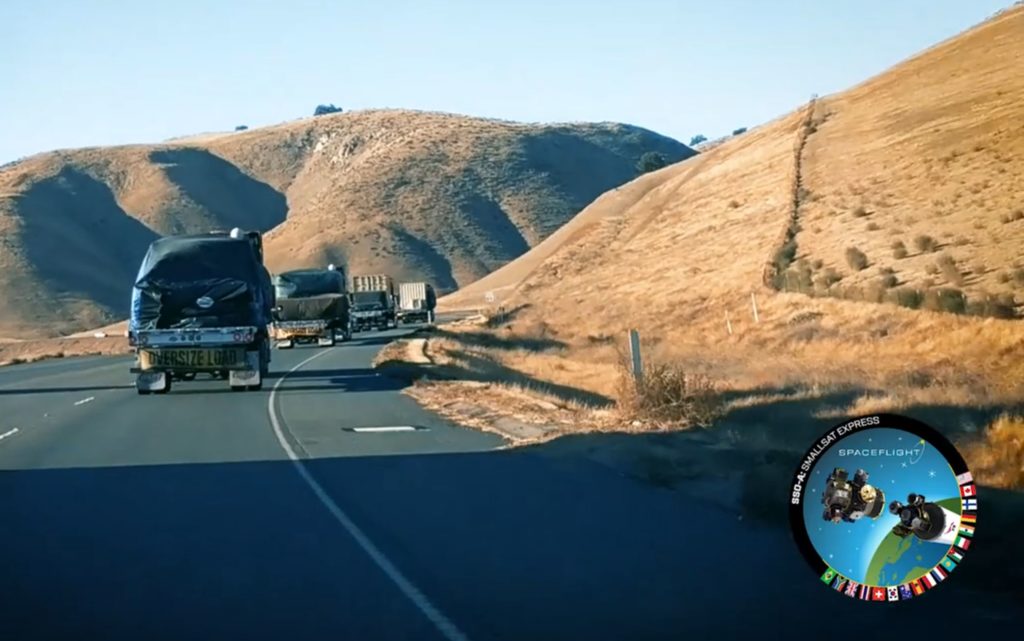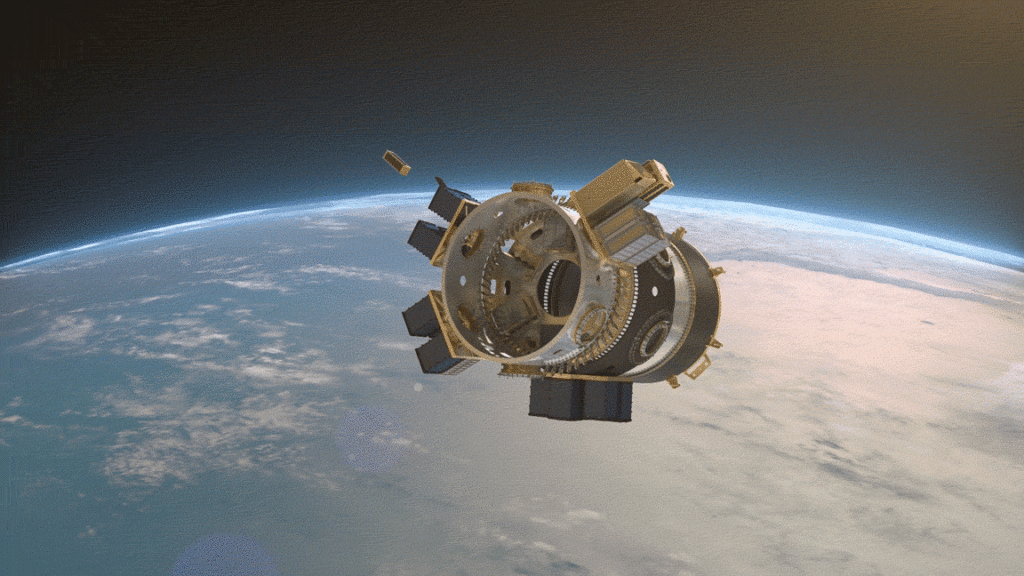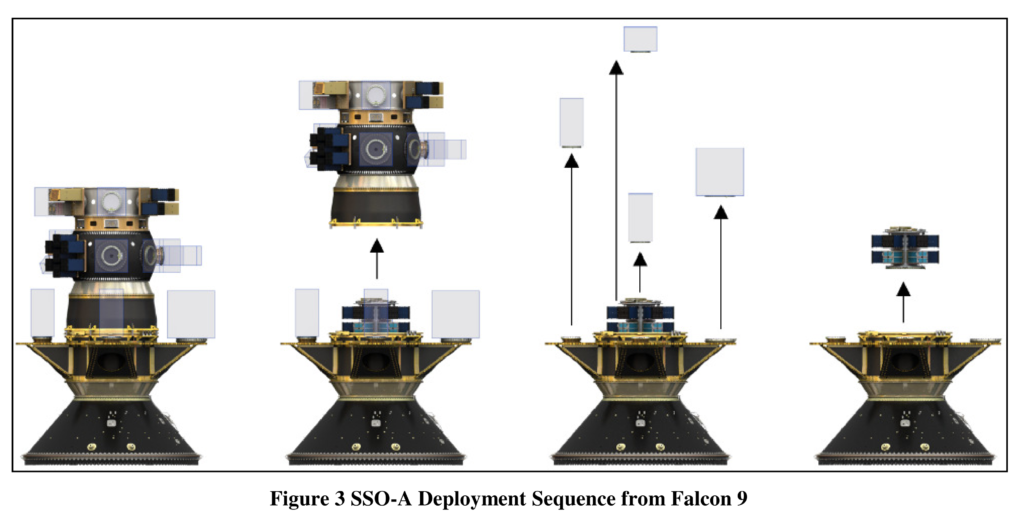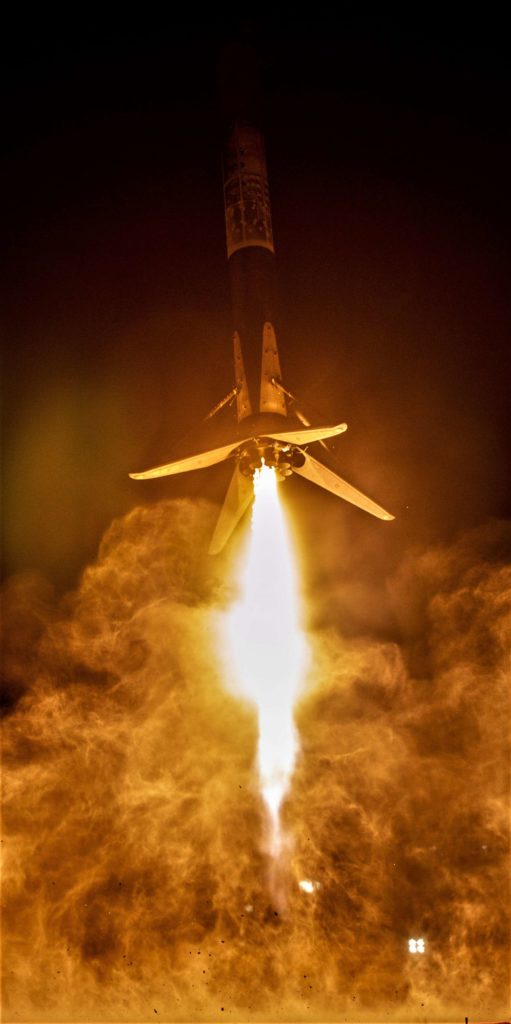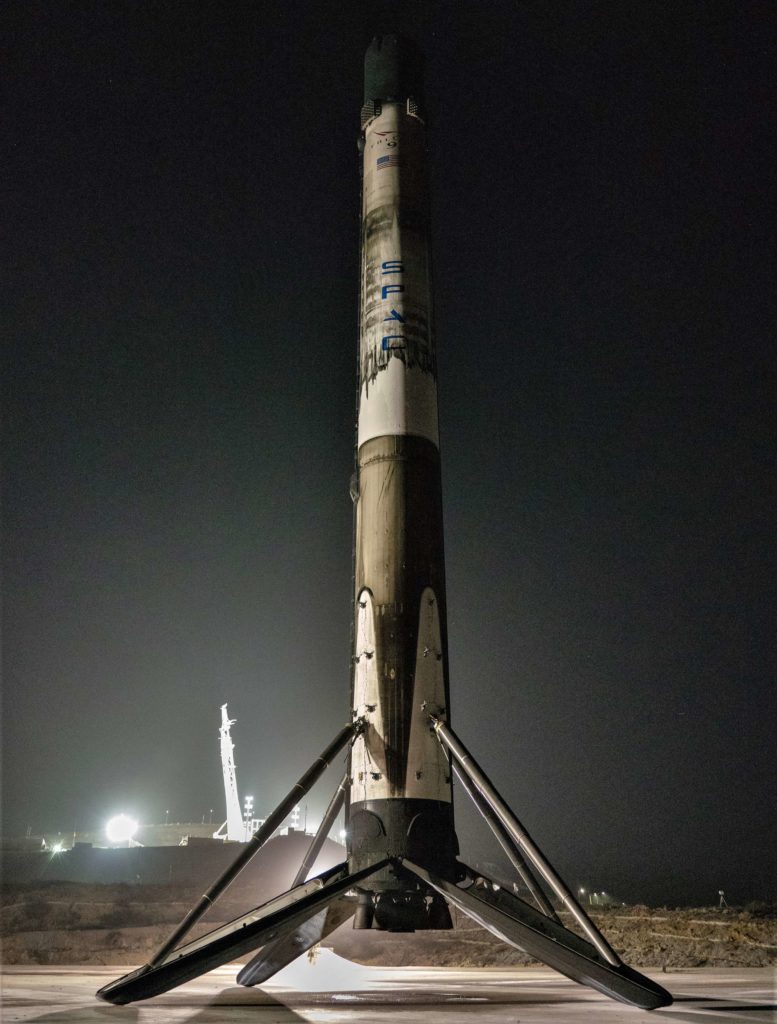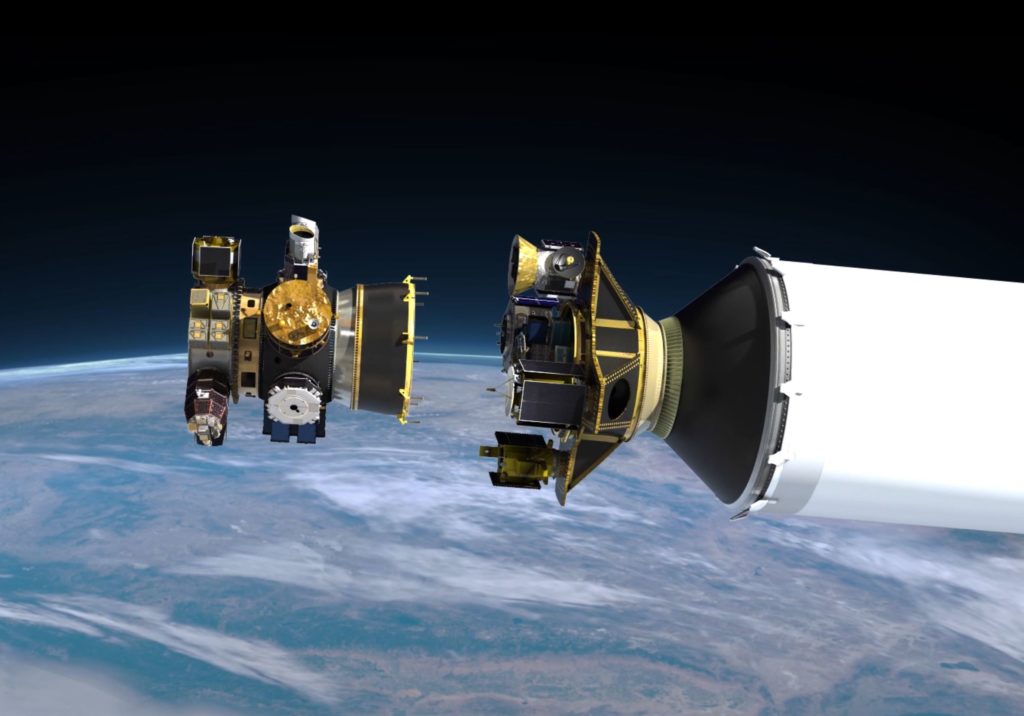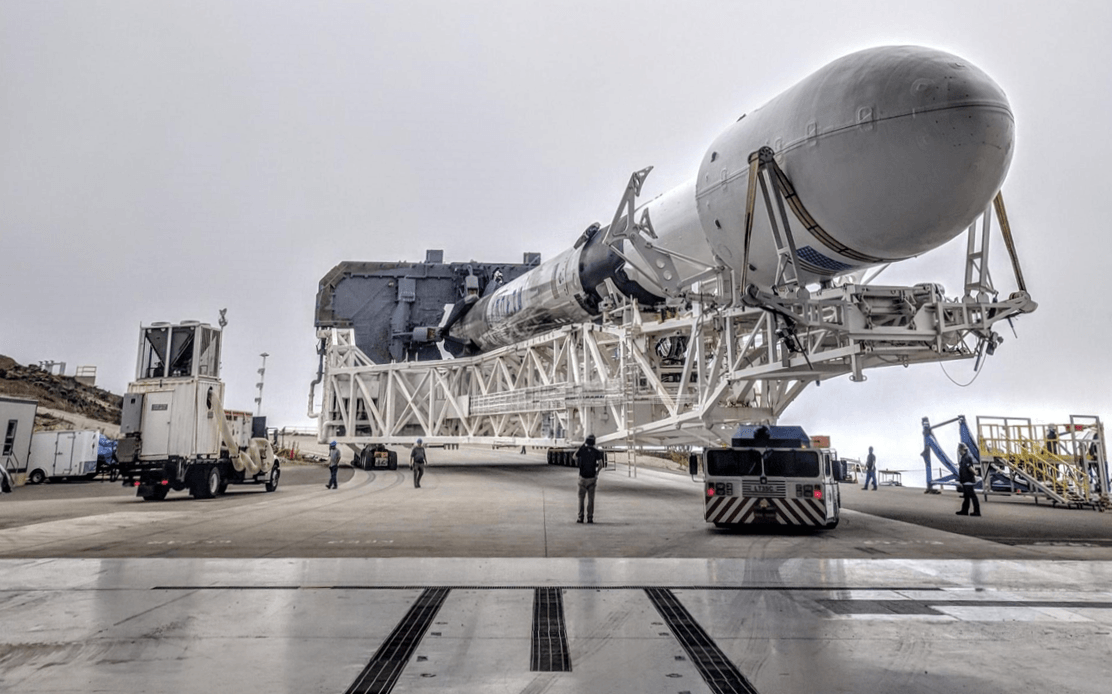
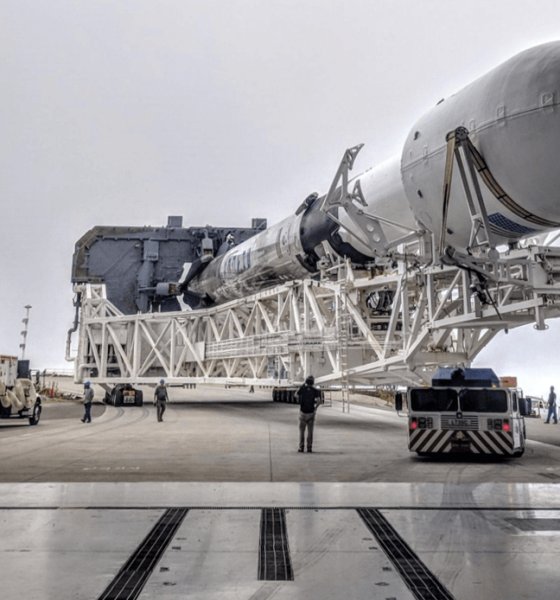
SpaceX
SpaceX targets Falcon 9 reusability milestone on first dedicated rideshare launch
SpaceX’s first dedicated rideshare – a collection of small satellites manifested for launch and organized by a third party – is into the final stretches of prelaunch preparations, readying for a ride to orbit on a flight-proven Falcon 9 no earlier than (NET) November 19th.
While unconfirmed, it appears that SpaceX is working to make SSO-A’s launch the first time the same Falcon 9 booster flies three missions, an accomplishment that may look minor up close but is actually a major step forward for orbital-class reusable rockets.
Who doesn't love a CONVOY? Watch our spacecraft start its journey to the launch pad here: https://t.co/97MxmjnKfl #ssoa #smallsatexpress
— Spaceflight (@SpaceflightInc) October 22, 2018
SSO-A organizer and launch customer Spaceflight Industries announced yesterday (Oct. 22) that the collection of several dozen satellites – called a “stack” when integrated together in and on Spaceflight’s custom dispenser – arrived at Vandenberg Air Force Base (VAFB) within the last few days, setting the stage for post-shipment health checkouts and encapsulation inside Falcon 9’s payload fairing.
“The assembled stack has now traveled by road 1,075 miles (1730 km) from Seattle. It will travel another 357 miles (575 km) to reach its targeted orbit. So we could say that the longest part of the journey is over…but the most exciting part is still to come!”
- Spaceflight’s convoy of support vehicles follow as the stack is shipped from Auburn, WA to Vandenberg, CA, a journey of ~1000 miles. (Spaceflight)
- Spaceflight’s SSO-A Upper Free Flyer visualized deploying cubesats shortly after launch on Falcon 9. (Spaceflight)
- SSO-A’s fairly intricate deployment sequence. (Spaceflight)
Arrival at the launch site is a huge milestone for any satellite or spacecraft and that is perhaps even more so the case for massive rideshare missions like SSO-A. The task of wrangling together dozens upon dozens of satellites of all different shapes and sizes – all coming from dozens of customers spread across the world – is understandably unenviable from a logistical standpoint. Despite the major hurdles and the apparent loss or slippage of a few dozen previously-planned satellites, it appears that Spaceflight Industries has made it through logistical hell and can now begin to focus on prelaunch operations after arriving at or near SpaceX’s California launch site.
If there were any stragglers with satellites that were not quite able to make it to Spaceflight’s Auburn, WA integration facilities ahead of shipment to California, there may still be a very limited time-frame for those customers to redirect their spacecraft to California and integrate with the full stack before the whole thing is closed up inside Falcon 9’s payload fairing.
- Falcon 9 B1048.2 landed at LZ-4 after its second successful launch. (SpaceX)
- Falcon 9 B1048 landed at LZ-4 after its second launch and is now being refurbished on the opposite coast. (SpaceX)
- A render of Spaceflight’s SSO-A dispensers attached to Falcon 9’s second stage.
Third time’s the charm
For Falcon 9, SSO-A is equally exciting. Likely to fly on either booster B1048 or B1046, both now with two successful launches on their records, this mission could mark the first time a Falcon 9 booster completes three orbital-class missions. If the rocket managed a successful recovery, either at SpaceX’s recently-inaugurated Landing Zone-4 (LZ-4) or well-worn drone ship Just Read The Instructions, it would pave the way for its fourth reflight and beyond. SpaceX designed Falcon 9 Block 5 to be capable of a minimum of 10 launches per booster with little to no refurbishment, potentially enabling 100+ flights each with regular maintenance.
If schedules hold, SSO-A will launch as few as five days after SpaceX’s NET November 14th launch of communications satellite Es’Hail-2 on the opposite coast.
For prompt updates, on-the-ground perspectives, and unique glimpses of SpaceX’s rocket recovery fleet check out our brand new LaunchPad and LandingZone newsletters!

News
Tesla hints at Starlink integration with recent patent
“By employing polymer blends, some examples enable RF transmission from all the modules to satellites and other communication devices both inside and outside the vehicle.”

Tesla hinted at a potential Starlink internet terminal integration within its vehicles in a recent patent, which describes a vehicle roof assembly with integrated radio frequency (RF) transparency.
The patent, which is Pub. No U.S. 2025/0368267 describes a new vehicle roof that is made of RF-transparent polymer materials, allowing and “facilitating clear communication with external devices and satellites.”
Tesla believes that a new vehicle roof design, comprised of different materials than the standard metallic or glass elements used in cars today, would allow the company to integrate modern vehicular technologies, “particularly those requiring radio frequency transmission and reception.
Tesla has recently filed a US patent application on integrating RF transparent materials into the roof structure.
“facilitating clear communication with external devices and satellites”
Tesla fleet is getting @Starlink connectivity integration soon. LFG @Tesla @elonmusk… pic.twitter.com/bLa8YtPLd1
— Chansoo Byeon (@Chansoo) December 9, 2025
Instead of glass or metallic materials, Tesla says vehicles may benefit from high-strength polymer blends, such as Polycarbonate, Acrylonitrile Butadiene Styrene, or Acrylonitrile Styrene Acrylate.
These materials still provide ideal strength metrics for crashworthiness, stiffness for noise, vibration, and harshness control, and are compliant with head impact regulations.
They would also enable better performance with modern technologies, like internet terminals, which need an uninterrupted signal to satellites for maximum reception. Tesla writes in the patent:
“By employing polymer blends, some examples enable RF transmission from all the modules to satellites and other communication devices both inside and outside the vehicle.”

One of the challenges Tesla seems to be aware of with this type of roof design is the fact that it will still have to enable safety and keep that at the forefront of the design. As you can see in the illustration above, Tesla plans to use four layers to increase safety and rigidity, while also combating noise and vibration.
It notes in the patent that disclosed examples still meet the safety requirements outlined in the Federal Motor Vehicle Safety Standards (FMVSS).
Starlink integrated directly into Tesla vehicles would be a considerable advantage for owners. It would come with a handful of distinct advantages.
Initially, the inclusion of Starlink would completely eliminate cellular dead zones, something that is an issue, especially in rural areas. Starlink would provide connectivity in these remote regions and would ensure uninterrupted service during road trips and off-grid adventures.
It could also be a critical addition for Robotaxi, as it is crucial to have solid and reliable connectivity for remote monitoring and fleet management.
Starlink’s growing constellation, thanks to SpaceX’s routine and frequent launch schedule, will provide secure, stable, and reliable internet connectivity for Tesla vehicles.
Although many owners have already mounted Starlink Mini dishes under their glass roofs for a similar experience, it may be integrated directly into Teslas in the coming years, either as an upgrade or a standard feature.
Investor's Corner
SpaceX IPO is coming, CEO Elon Musk confirms
However, it appears Musk is ready for SpaceX to go public, as Ars Technica Senior Space Editor Eric Berger wrote an op-ed that indicated he thought SpaceX would go public soon. Musk replied, basically confirming it.

Elon Musk confirmed through a post on X that a SpaceX initial public offering (IPO) is on the way after hinting at it several times earlier this year.
It also comes one day after Bloomberg reported that SpaceX was aiming for a valuation of $1.5 trillion, adding that it wanted to raise $30 billion.
Musk has been transparent for most of the year that he wanted to try to figure out a way to get Tesla shareholders to invest in SpaceX, giving them access to the stock.
He has also recognized the issues of having a public stock, like litigation exposure, quarterly reporting pressures, and other inconveniences.
However, it appears Musk is ready for SpaceX to go public, as Ars Technica Senior Space Editor Eric Berger wrote an op-ed that indicated he thought SpaceX would go public soon.
Musk replied, basically confirming it:
As usual, Eric is accurate
— Elon Musk (@elonmusk) December 10, 2025
Berger believes the IPO would help support the need for $30 billion or more in capital needed to fund AI integration projects, such as space-based data centers and lunar satellite factories. Musk confirmed recently that SpaceX “will be doing” data centers in orbit.
AI appears to be a “key part” of SpaceX getting to Musk, Berger also wrote. When writing about whether or not Optimus is a viable project and product for the company, he says that none of that matters. Musk thinks it is, and that’s all that matters.
It seems like Musk has certainly mulled something this big for a very long time, and the idea of taking SpaceX public is not just likely; it is necessary for the company to get to Mars.
The details of when SpaceX will finally hit that public status are not known. Many of the reports that came out over the past few days indicate it would happen in 2026, so sooner rather than later.
But there are a lot of things on Musk’s plate early next year, especially with Cybercab production, the potential launch of Unsupervised Full Self-Driving, and the Roadster unveiling, all planned for Q1.
News
SpaceX reportedly mulling IPO, eyeing largest of all time: report
“I do want to try to figure out some way for Tesla shareholders to participate in SpaceX. I’ve been giving a lot of thought to how to give people access to SpaceX stock,” Musk said.

SpaceX is reportedly mulling an initial public offering, eyeing what would be the largest valuation at the time of availability of all time, a new report from Bloomberg said on Tuesday.
It is one of many reports involving one of Elon Musk’s companies and a massive market move, as this is not the first time we have seen reports of an IPO by SpaceX. Musk himself has also dispelled other reports in the past of a similar nature, including an xAI funding round.
SpaceX and Musk have yet to comment on the report. In the past, untrue reports were promptly replied to by the CEO; this has not yet gained any response, which is a good sign in terms of credibility.
However, he said just a few days ago that stories of this nature are inaccurate:
“There has been a lot of press claiming SpaceX is raising money at $800B, which is not accurate. SpaceX has been cash flow positive for many years and does periodic stock buybacks twice a year to provide liquidity for employees and investors. Valuation increments are a function of progress with Starship and Starlink and securing global direct-to-cell spectrum that greatly increases our addressable market. And one other thing that is arguably most significant by far.”
There has been a lot of press claiming @SpaceX is raising money at $800B, which is not accurate.
SpaceX has been cash flow positive for many years and does periodic stock buybacks twice a year to provide liquidity for employees and investors.
Valuation increments are a…
— Elon Musk (@elonmusk) December 6, 2025
Musk has discussed a potential IPO for SpaceX in recent months, as the November 6 shareholder meeting, as he commented on the “downsides” of having a public company, like litigation exposure, quarterly reporting pressures, and other inconveniences.
Nevertheless, Musk has also said he wants there to be a way for Tesla shareholders to get in on the action. At the meeting in early November, he said:
“I do want to try to figure out some way for Tesla shareholders to participate in SpaceX. I’ve been giving a lot of thought to how to give people access to SpaceX stock.”
Additionally, he added:
“Maybe at some point., SpaceX should become a public company despite all the downsides of being public.”
Musk has been historically reluctant to take SpaceX public, at times stating it could become a barrier to colonizing Mars. That does not mean it will not happen.
Bloomberg’s report cites multiple unidentified sources who are familiar with the matter. They indicate to the publication that SpaceX wants to go public in mid-to-late 2026, and it wants to raise $30 billion at a valuation of around $1.5 trillion.
This is not the first time SpaceX has discussed an IPO; we reported on it nine years ago. We hope it is true, as the community has spoken for a long time about having access to SpaceX stock. Legendary investor Ron Baron is one of the lucky few to be a SpaceX investor, and said it, along with Tesla, is a “lifetime investment.”
Tesla bull Ron Baron reveals $100M SpaceX investment, sees 3-5x return on TSLA
The primary driver of SpaceX’s value is Starlink, the company’s satellite internet service. Starlink contributes 60-70 percent of SpaceX’s revenue, meaning it is the primary value engine. Launch services, like Falcon 9 contracts, and the development of Starship, also play supporting roles.
